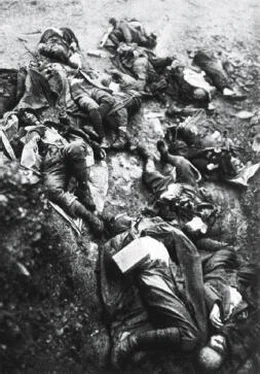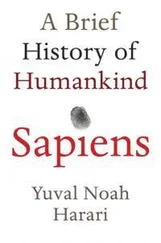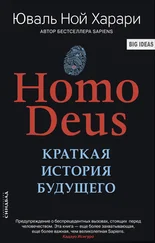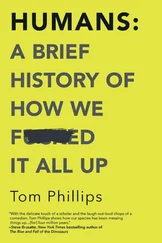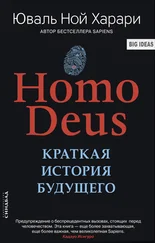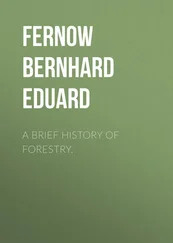51. Robert J. Lake, ‘Social Class, Etiquette and Behavioral Restraint in British Lawn Tennis’, International Journal of the History of Sport 28:6 (2011), 876–94; Beatriz Colomina, ‘The Lawn at War: 1941–1961’, in The American Lawn , ed. Georges Teyssot (New York: Princeton Architectural Press, 1999), 135–53; Virginia Scott Jenkins, The Lawn: History of an American Obsession (Washington: Smithsonian Institution, 1994).
2 The Anthropocene
1. ‘ Canis lupus ’, IUCN Red List of Threatened Species, accessed 20 December 2014, http://www.iucnredlist.org/details/3746/1; ‘Fact Sheet: Gray Wolf’, Defenders of Wildlife, accessed 20 December 2014, http://www.defenders.org/gray-wolf/basic-facts; ‘Companion Animals’, IFAH, accessed 20 December 2014, http://www.ifaheurope.org/companion-animals/about-pets.html; ‘Global Review 2013’, World Animal Protection, accessed 20 December 2014, https://www.worldanimalprotection.us.org/sites/default/files/us_files/global_review_2013_0.pdf.
2. Anthony D. Barnosky, ‘Megafauna Biomass Tradeoff as a Driver of Quaternary and Future Extinctions’, PNAS 105:1 (2008), 11543–8; for wolves and lions: William J. Ripple et al., ‘Status and Ecological Effects of the World’s Largest Carnivores’, Science 343:6167 (2014), 151; according to Dr Stanley Coren there are about 500 million dogs in the world: Stanley Coren, ‘How Many Dogs Are There in the World?’, Psychology Today , 19 September 2012, accessed 20 December 2014, http://www.psychologytoday.com/blog/canine-corner/201209/how-many-dogs-are-there-in-the-world; for the number of cats, see: Nicholas Wade, ‘DNA Traces 5 Matriarchs of 600 Million Domestic Cats’, New York Times , 29 June 2007, accessed 20 December 2014, http://www.nytimes.com/2007/06/29/health/29iht-cats.1.6406020.html; for the African buffalo, see: ‘ Syncerus caffer ’, IUCN Red List of Threatened Species, accessed 20 December 2014, http://www.iucnredlist.org/details/21251/0; for cattle population, see: David Cottle and Lewis Kahn (eds), Beef Cattle Production and Trade (Collingwood: Csiro, 2014), 66; for the number of chickens, see: ‘Live Animals’, Food and Agriculture Organization of the United Nations: Statistical Division, accessed 20 December 2014, http://faostat3.fao.org/browse/Q/QA/E; for the number of chimpanzees, see: ‘ Pan troglodytes ’, IUCN Red List of Threatened Species, accessed 20 December 2014, http://www.iucnredlist.org/details/15933/0.
3. ‘Living Planet Report 2014’, WWF Global, accessed 20 December 2014, http://wwf.panda.org/about_our_earth/all_publications/living_ planet_report/.
4. Richard Inger et al., ‘Common European Birds Are Declining Rapidly While Less Abundant Species’ Numbers Are Rising’, Ecology Letters 18:1 (2014), 28–36; ‘Live Animals’, Food and Agriculture Organization of the United Nations, accessed 20 December 2014, http://faostat.fao.org/site/573/default.aspx#ancor.
5. Simon L. Lewis and Mark A. Maslin, ‘Defining the Anthropocene’, Nature 519 (2015), 171–80.
6. Timothy F. Flannery, The Future Eaters: An Ecological History of the Australasian Lands and Peoples (Port Melbourne: Reed Books Australia, 1994); Anthony D. Barnosky et al., ‘Assessing the Causes of Late Pleistocene Extinctions on the Continents’, Science 306:5693 (2004), 70–5; Barry W. Brook and David M. J. S. Bowman, ‘The Uncertain Blitzkrieg of Pleistocene Megafauna’, Journal of Biogeography 31:4 (2004), 517–23; Gifford H. Miller et al., ‘Ecosystem Collapse in Pleistocene Australia and a Human Role in Megafaunal Extinction’, Science 309:5732 (2005), 287–90; Richard G. Roberts et al., ‘New Ages for the Last Australian Megafauna: Continent Wide Extinction about 46,000 Years Ago’, Science 292:5523 (2001), 1888–92; Stephen Wroe and Judith Field, ‘A Review of the Evidence for a Human Role in the Extinction of Australian Megafauna and an Alternative Explanation’, Quaternary Science Reviews 25:21–2 (2006), 2692–703; Barry W. Brooks et al., ‘Would the Australian Megafauna Have Become Extinct if Humans Had Never Colonised the Continent? Comments on “A Review of the Evidence for a Human Role in the Extinction of Australian Megafauna and an Alternative Explanation” by S. Wroe and J. Field’, Quaternary Science Reviews 26:3–4 (2007), 560–4; Chris S. M. Turney et al., ‘Late-Surviving Megafauna in Tasmania, Australia, Implicate Human Involvement in their Extinction’, PNAS 105:34 (2008), 12150–3; John Alroy, ‘A Multispecies Overkill Simulation of the End-Pleistocene Megafaunal Mass Extinction’, Science 292:5523 (2001), 1893–6; J. F. O’Connell and J. Allen, ‘Pre-LGM Sahul (Australia–New Guinea) and the Archaeology of Early Modern Humans’, in Rethinking the Human Evolution: New Behavioral and Biological Perspectives on the Origin and Dispersal of Modern Humans , ed. Paul Mellars (Cambridge: McDonald Institute for Archaeological Research, 2007), 400–1.
7. Graham Harvey, Animism: Respecting the Living World (Kent Town: Wakefield Press, 2005); Rane Willerslev, Soul Hunters: Hunting, Animism and Personhood Among the Siberian Yukaghirs (Berkeley: University of California Press, 2007); Elina Helander-Renvall, ‘Animism, Personhood and the Nature of Reality: Sami Perspectives’, Polar Record 46:1 (2010), 44–56; Istvan Praet, ‘Animal Conceptions in Animism and Conservation’, in Routledge Handbook of Human–Animal Studies , ed. Susan McHaugh and Garry Marvin (New York: Routledge, 2014), 154–67; Nurit Bird-David, ‘Animism Revisited: Personhood, Environment, and Relational Epistemology’, Current Anthropology 40 (1999), s67–91; N. Bird-David, ‘Animistic Epistemology: Why Some Hunter-Gatherers Do Not Depict Animals’, Ethnos 71:1 (2006), 33–50.
8. Danny Naveh, ‘Changes in the Perception of Animals and Plants with the Shift to Agricultural Life: What Can Be Learnt from the Nayaka Case, a Hunter-Gatherer Society from the Rain Forests of Southern India?’ [in Hebrew], Animals and Society , 52 (2015), 7–8.
9. Howard N. Wallace, ‘The Eden Narrative’, Harvard Semitic Monographs 32 (1985), 147–81.
10. David Adams Leeming and Margaret Adams Leeming, Encyclopedia of Creation Myths (Santa Barbara: ABC-CLIO, 1994), 18; Sam D. Gill, Storytracking: Texts, Stories, and Histories in Central Australia (Oxford: Oxford University Press, 1998); Emily Miller Bonney, ‘Disarming the Snake Goddess: A Reconsideration of the Faience Figures from the Temple Repositories at Knossos’, Journal of Mediterranean Archaeology 24:2 (2011), 171–90; David Leeming, The Oxford Companion to World Mythology (Oxford and New York: Oxford University Press, 2005), 350.
11. Jerome H. Barkow, Leda Cosmides and John Tooby (eds), The Adapted Mind: Evolutionary Psychology and the Generation of Culture (Oxford: Oxford University Press, 1992); Richard W. Bloom and Nancy Dess (eds), Evolutionary Psychology and Violence: A Primer for Policymakers and Public Policy Advocates (Westport: Praeger, 2003); Charles Crawford and Catherine Salmon (eds), Evolutionary Psychology, Public Policy and Personal Decisions (New Jersey: Lawrence Erlbaum Associates, 2008); Patrick McNamara and David Trumbull, An Evolutionary Psychology of Leader–Follower Relations (New York: Nova Science, 2007); Joseph P. Forgas, Martie G. Haselton and William von Hippel (eds), Evolution and the Social Mind: Evolutionary Psychology and Social Cognition (New York: Psychology Press, 2011).
12. S. Held, M. Mendl, C. Devereux and R. W. Byrne, ‘Social Tactics of Pigs in a Competitive Foraging Task: the “Informed Forager” Paradigm’, Animal Behaviour 59:3 (2000), 569–76; S. Held, M. Mendl, C. Devereux and R. W. Byrne, ‘Studies in Social Cognition: from Primates to Pigs’, Animal Welfare 10 (2001), s209–17; H. B. Graves, ‘Behavior and Ecology of Wild and Feral Swine ( Sus scrofa )’, Journal of Animal Science 58:2 (1984), 482–92; A. Stolba and D. G. M. Wood-Gush, ‘The Behaviour of Pigs in a Semi-Natural Environment’, Animal Production 48:2 (1989), 419–25; M. Spinka, ‘Behaviour in Pigs’, in The Ethology of Domestic Animals , 2nd edn, ed. P. Jensen, (Wallingford, UK: CAB International, 2009), 177–91; P. Jensen and D. G. M. Wood-Gush, ‘Social Interactions in a Group of Free-Ranging Sows’, Applied Animal Behaviour Science 12 (1984), 327–37; E. T. Gieling, R. E. Nordquist and F. J. van der Staay, ‘Assessing Learning and Memory in Pigs’, Animal Cognition 14 (2011), 151–73.
Читать дальше
Конец ознакомительного отрывка
Купить книгу
